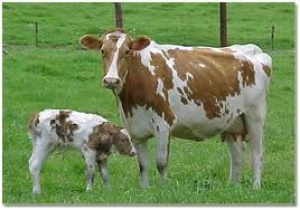Dairy Experts

This finding reflects changes in priorities over the last ten years as the merits of producing more milk from grass have become better understood and the choice of higher quality ryegrass varieties has increased, says the company’s agricultural director Paul Billings.
The survey is derived from interviews with over 250 dairy farmers attending the main agricultural technical events when they were asked to rank seven criteria in order of importance. In the most recent set of results, D-value was ranked second only to persistence by dairy farmers, with total yield now only considered more important than disease resistance.
Priorities for beef and sheep farmers differed from those of dairy farmers, with total yield still more important than D-value to this audience.
“We know from independent research that each unit of D-value equates to between 0.25 and 0.4 litres/cow/day in extra production,” explains Paul Billings, “and it would appear that dairy farmers are now factoring this in to their grass variety selection."
“Since the emergence of the Aber High Sugar Grasses the difference between the highest and lowest even amongst officially recommended varieties has increased significantly. For example, amongst intermediate heading diploid perennial ryegrasses alone on the current Recommended Lists for England and Wales, the difference in mid-summer D-value between the highest and the lowest is over 4 D-value points. This equates to at least 1.0 litre/cow/day in production terms, which is a massive uplift if efficiency and profitability."
“Above all else, this information highlights how vitally important the independent Recommended Lists are to livestock farmers throughout the UK, and it is encouraging to see that more farmers are appreciating the value of the data at their disposal.”






















